This article doesn’t want to be a substitute for reading the entire book of the rules as published by the World XiangQi Federation and approved also by the Chinese XiangQi Association.
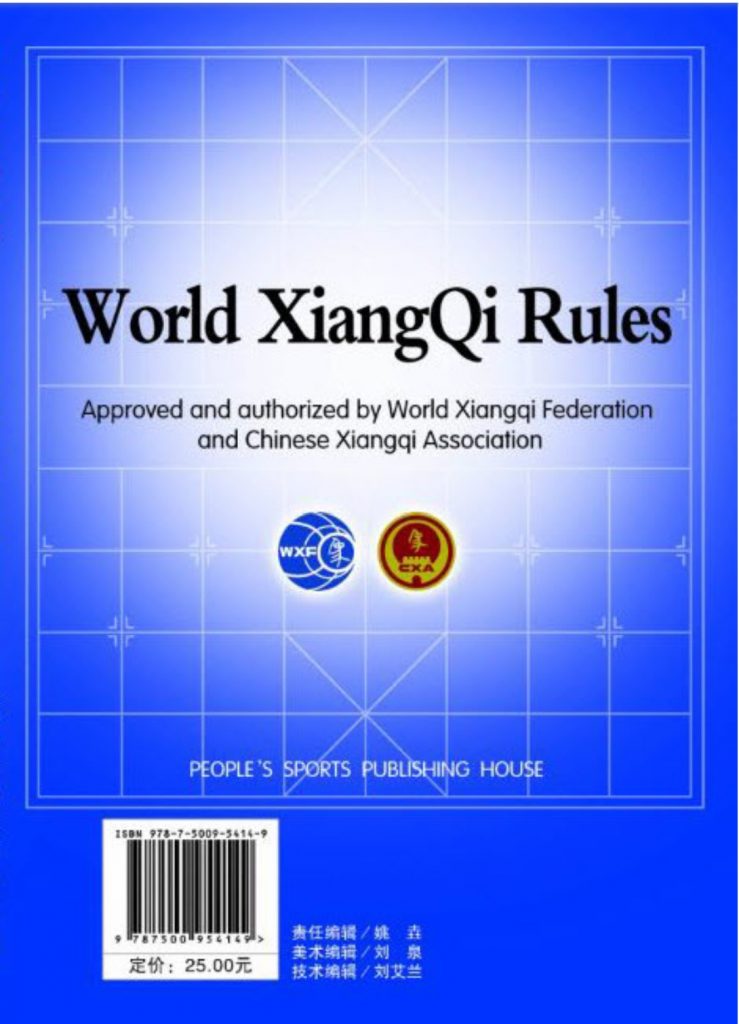
The same for the booklet published by the Asian XiangQi federation. Both these works are more comprehensive and treat the rules in a more complete manner. Yet, from the perspective of a beginner learning Chinese Chess, it’s a must to read this article for avoiding misunderstandings when playing XiangQi, and growing as XiangQi player.
The world championship is rapidly approaching, it’s not a bad idea to refresh what are the rules. I found the following positions in a book for beginners, and I tried to translate what they wrote (all errors are mine).

The rule says one is NOT allowed to give check perpetually to the enemy General, in western chess terminology we use the word: King. Yet cross checks are allowed and bring the game into a draw if neither side wants to change moves. Here it was played: 1.C5=4 A6-5 2.C4=5 A5+6 3.C5=4 A6-5
Now let’s see another position which can seem puzzling:
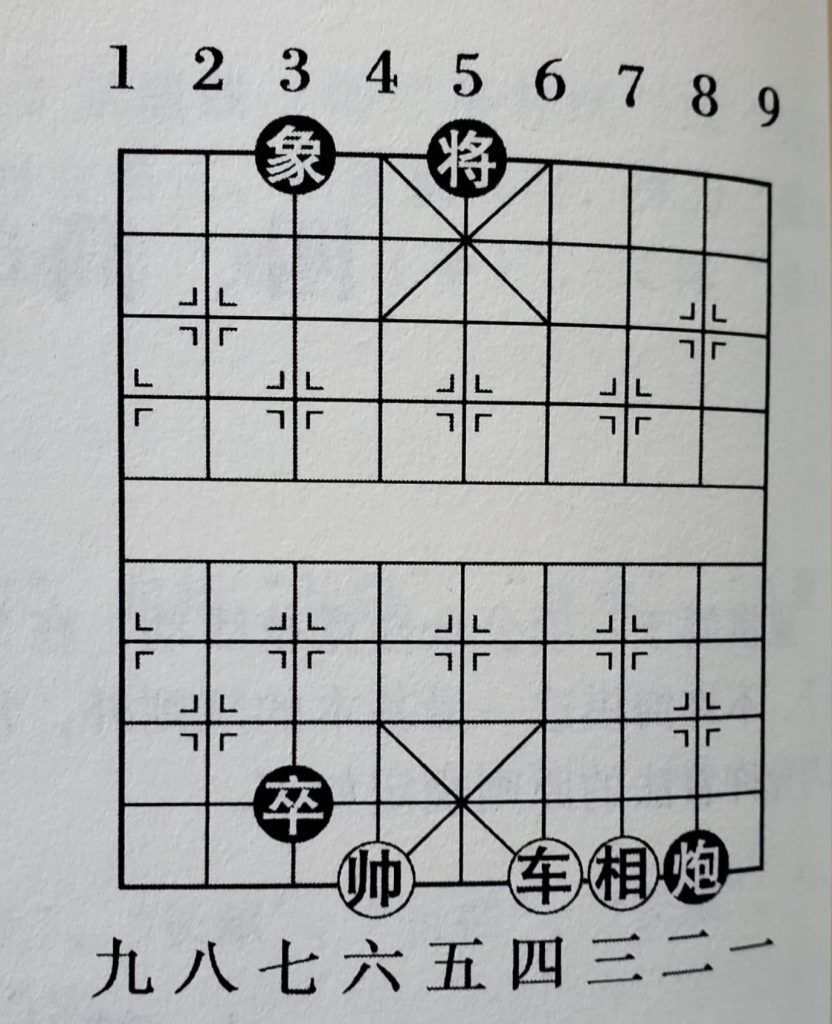
This position, which can be found in a nearly identical form in XiangQi rules found in Internet, yet it has a kind of big logical flaw:

Here they write “red keeps checking” not really, can someone show how red would play any other legal move?? While Black can actually take the enemy rook (or chariot). Of the two players the one who has a choice is Black, Red has no choice.
In regards to the above position the translator was asked an opinion and he said: it seems the logic behind was to show that also in an extreme case, like the one shown, red has to change or loses. So maybe it was to make it clear to everyone.
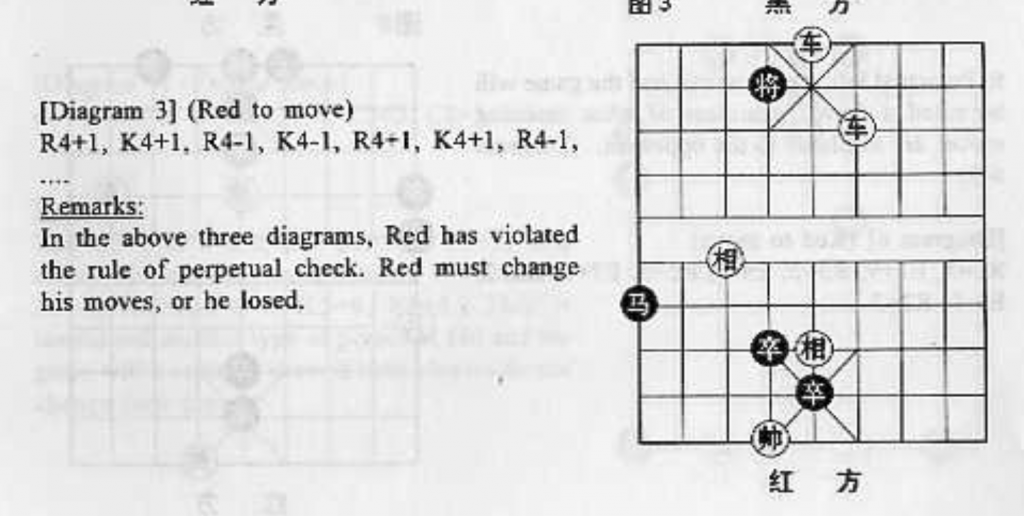
Instead in this position makes sense to forbid the perpetual checks and rule it a loss for Red, because Red has other legal moves he can play. Why it makes sense? Because the General cannot really escape from the palace, and avoid the endless checks. Yet, in western chess this endless series of checks has been ruled as a draw.
Let’s see another position:
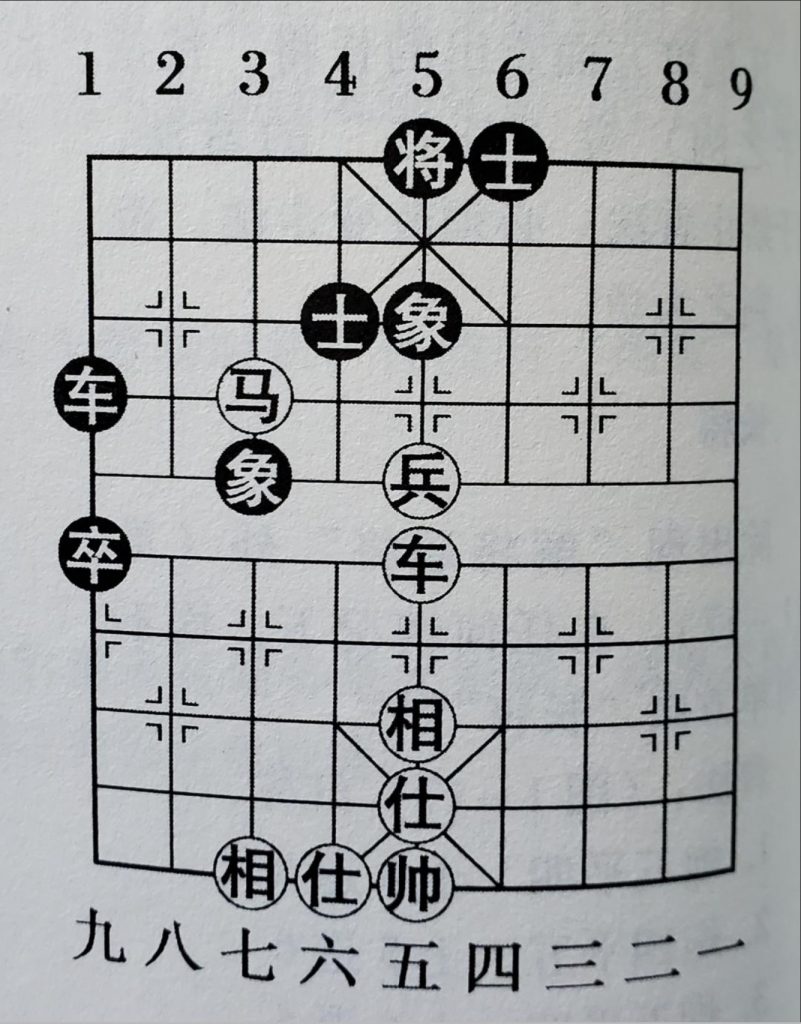
Here the following moves are played: 1.N7+8 R1-1 2.N8-7 R1+1 and so on for the next 4-5 moves.
At page 62 of the World XiangQi rules is written: “a Horse may not perpetually chase a Chariot (whether or not the latter is protected), even though the Chariot counter chases the Horse on every other move. In the diagram given above it makes sense, because the Chariot is defending the advisor, and doesn’t want to lose it. But let’s see the next diagram:
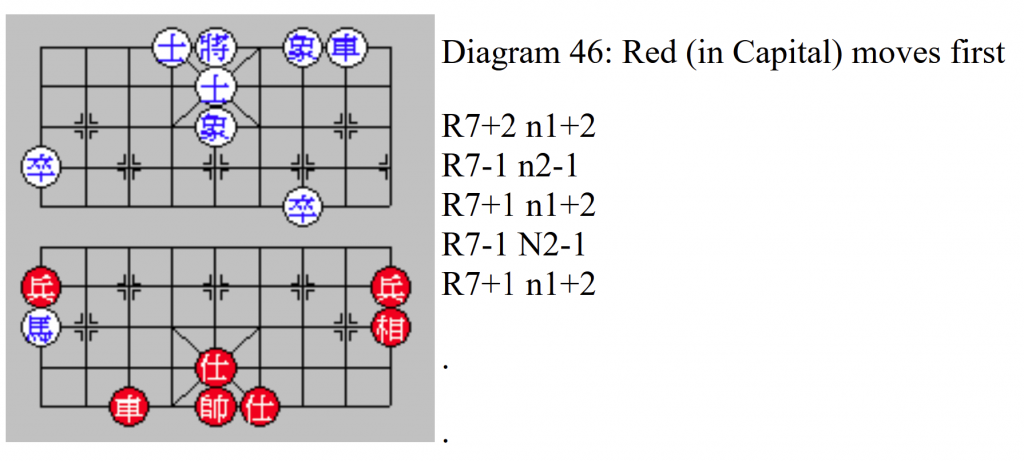
Also in this case we see Black has no option, to avoid to lose the horse, he needs to continue to play N1+2 or N2-1 when “chased” by the chariot. Yet the rule is saying the horse is chasing the chariot. But the event (since time should be considered linear in chess with one move played by one color followed by the opposite color) is initiated by the Red chariot which is attacking the horse.
Yet, when asked to the expert Vice-President of the Italian XiangQi Federation, he pointed out that the chariot is NOT “chasing” twice but just threatening the horse, hence the reason why Black must change and accept the loss of the horse, or not change and lose the game!
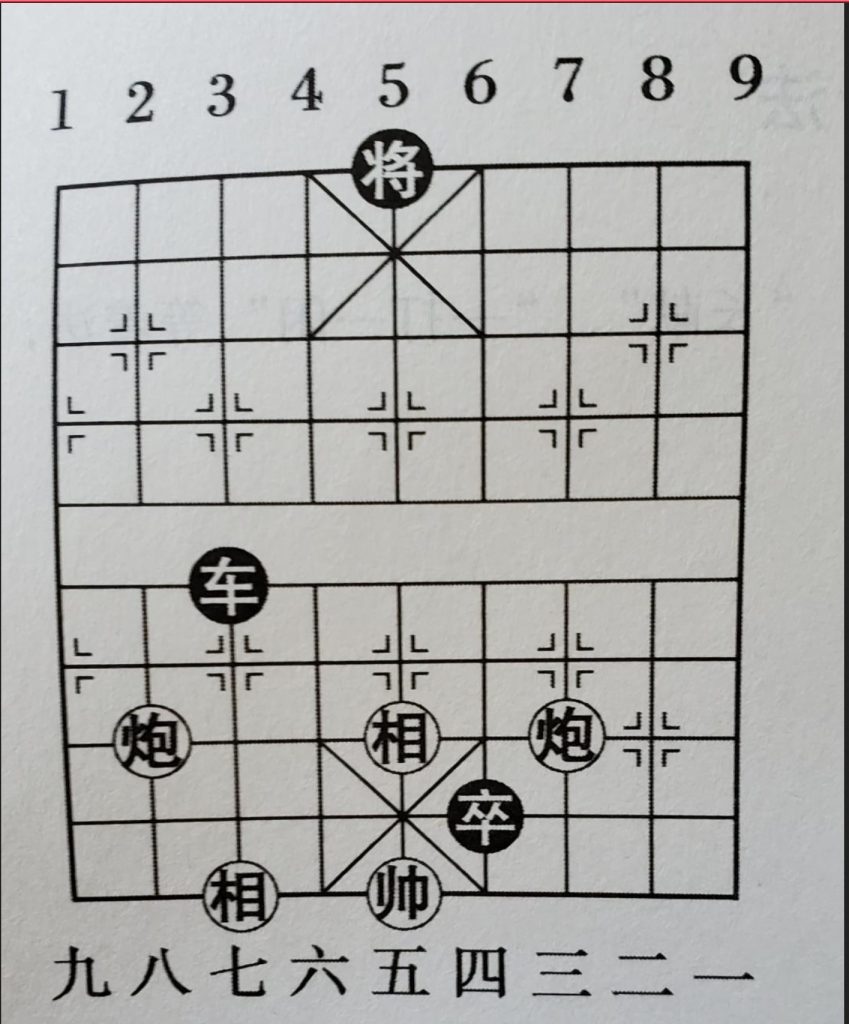
Here Red played 1.C8=7 R3=2 2.C7=8 R2=3 and the same back and forth for 3-4 moves.
The elephant in front of the king is pinned by the other king, so Black is trying to take the elephant on the first rank. Red is defending putting the cannon which is protected by the other cannon, and continuously placing the cannon in front of the rook to prevent the rook from entering the first rank.
This position is considered a draw if no side desires to change their moves.
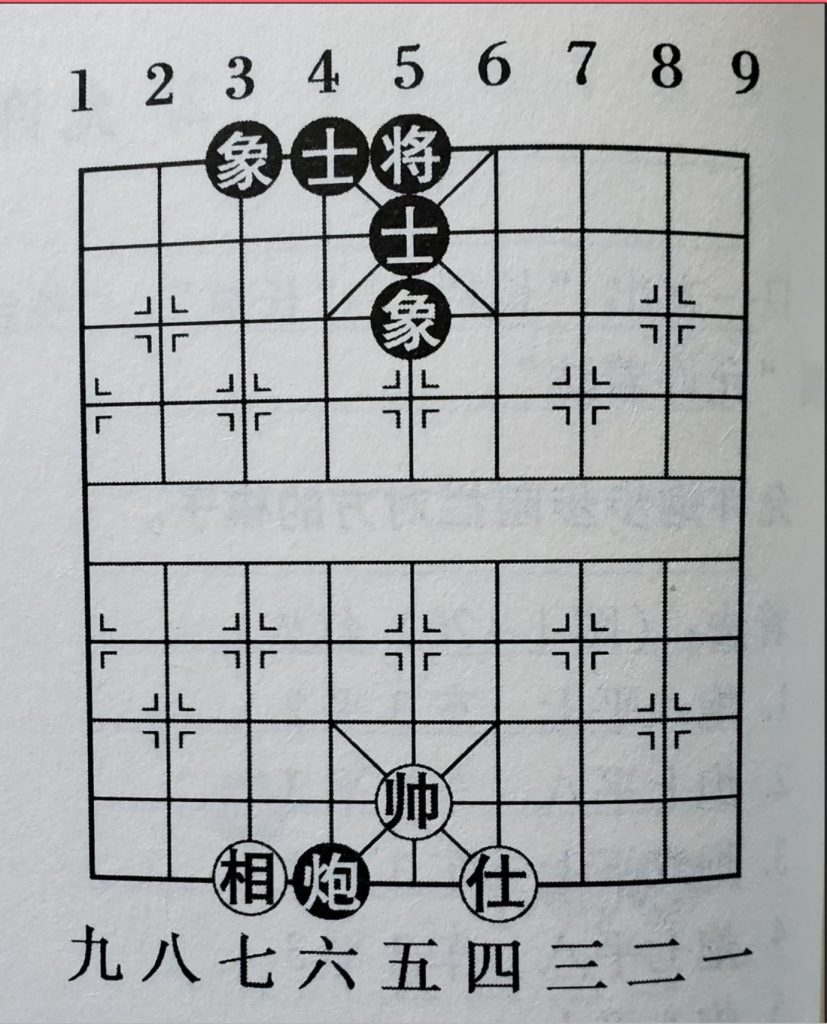
1.K5=6 C4=5 2.K6=5 C5=4 and repeat this series for 4-5 moves.
The rule here is simple: The King (General) is allowed to perpetually chase an opponent’s piece. (this can be found at page 75 of the World XiangQi Rules book)
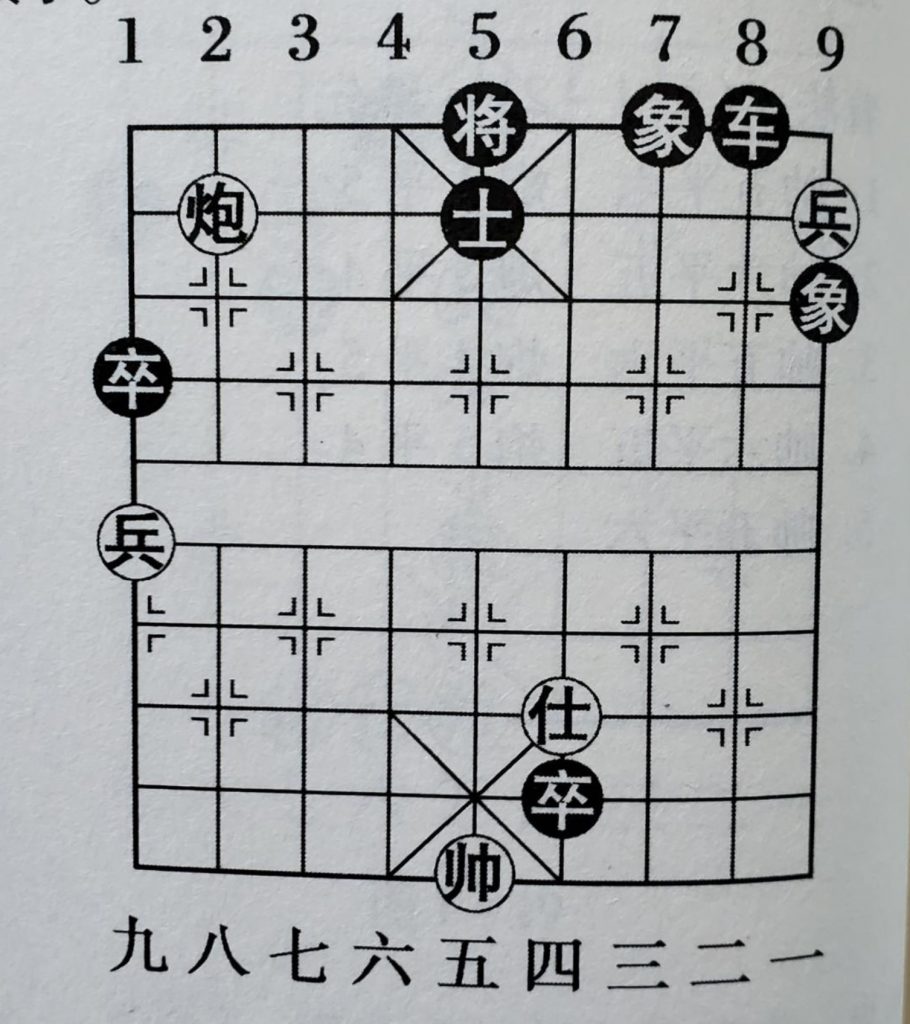
1.P1=2 R8=9 2.P2=1 R9=8 and repeat for few moves. The rule here, which can be found at page 76 of the above mentioned book, says: a single pawn is allowed to chase opponent’s material perpetually.
As we can see to learn the rules of the game is essential for those who intend to participate in tournaments. Every player should little by little familiarize himself with the rules and regulations, and teach to other beginners to create a more professional XiangQi community.
